The Radiologists’ Guide to Spinal Separation Surgery: What Does the Surgeon Want to Know?
Abstract
1. Introduction
1.1. What Is Spinal Separation Surgery?
1.2. How Is Spinal Separation Surgery Performed?
1.3. What Are the Tumours Appropriate for Spinal Separation Surgery?
1.3.1. Metastatic Spinal Cord Compression
1.3.2. Spinal Sarcomas
1.3.3. Adjuvant Radiotherapy Techniques
1.3.4. Conventional External Beam Radiotherapy (EBRT)
1.3.5. Stereotactic Body Radiotherapy (SBRT) and Stereotactic Radiosurgery (SRS)
1.3.6. Particle Beam Therapy (PBT)
2. Case Examples
2.1. Case 1: Cervical Chordoma
2.2. Case 2: Sacral Chordoma
2.3. Case 3: Cervical Chordoma
2.4. Case 4: Lumbar Chordoma
2.5. The Radiological Report
2.6. Tumour Location and Dimensions
2.7. Neuraland Vascular Structures
2.8. Vertebral Column Stability
2.9. Surveillance and Disease Progression
2.10. Challenges of Surveillance Imaging
3. Conclusions
Author Contributions
Funding
Institutional Review Board Statement
Informed Consent Statement
Data Availability Statement
Conflicts of Interest
References
- Ciftdemir, M.; Kaya, M.; Selcuk, E.; Yalniz, E. Tumors of the spine. World J. Orthop. 2016, 7, 109–116. [Google Scholar] [CrossRef]
- Zhang, K.; Zhou, Q.; Da, L.; Zhang, G. Efficacy and safety of en-bloc resection versus debulking for spinal tumor: A systematic review and meta-analysis. World J. Surg. Oncol. 2024, 22, 208. [Google Scholar] [CrossRef]
- Laufer, I.; Rubin, D.G.; Lis, E.; Cox, B.W.; Stubblefield, M.D.; Yamada, Y.; Bilsky, M.H. The NOMS framework: Approach to the treatment of spinal metastatic tumors. Oncologist 2013, 18, 744–751. [Google Scholar] [CrossRef] [PubMed]
- Spratt, D.E.; Beeler, W.H.; de Moraes, F.Y.; Rhines, L.D.; Gemmete, J.J.; Chaudhary, N.; Shultz, D.B.; Smith, S.R.; Berlin, A.; Dahele, M.; et al. An integrated multidisciplinary algorithm for the management of spinal metastases: An International Spine Oncology Consortium report. Lancet Oncol. 2017, 18, e720–e730. [Google Scholar] [CrossRef]
- Bilsky, M.H.; Yamada, Y.; Yenice, K.M.; Lovelock, M.; Hunt, M.; Gutin, P.; Leibel, S. Intensity-modulated stereotactic radiotherapy of paraspinal tumors: A preliminary report. Neurosurgery 2004, 54, 823–830, discussion 830–831. [Google Scholar] [CrossRef]
- Chen, H.; Ghia, A.J.; Maralani, P.J.; Bettegwoda, C.; Boriani, S.; Dea, N.; Fisher, C.G.; Gasbarrini, A.; Gokaslan, Z.L.; Laufer, I.; et al. Advanced Radiotherapy Technologies in Spine Tumors: What the Surgeon Needs to Know. Glob. Spine J. 2025, 15 (Suppl. 1), 104S–119S. [Google Scholar] [CrossRef]
- Patchell, R.A.; Tibbs, P.A.; Regine, W.F.; Payne, R.; Saris, S.; Kryscio, R.J.; Mohiuddin, M.; Young, B. Direct decompressive surgical resection in the treatment of spinal cord compression caused by metastatic cancer: A randomised trial. Lancet 2005, 366, 643–648. [Google Scholar] [CrossRef]
- Katagiri, H.; Takahashi, M.; Inagaki, J.; Kobayashi, H.; Sugiura, H.; Yamamura, S.; Iwata, H. Clinical results of nonsurgical treatment for spinal metastases. Int. J. Radiat. Oncol. Biol. Phys. 1998, 42, 1127–1132. [Google Scholar] [CrossRef]
- Chow, E.; Zeng, L.; Salvo, N.; Dennis, K.; Tsao, M.; Lutz, S. Update on the systematic review of palliative radiotherapy trials for bone metastases. Clin. Oncol. 2012, 24, 112–124. [Google Scholar] [CrossRef]
- Gerszten, P.C.; Mendel, E.; Yamada, Y. Radiotherapy and radiosurgery for metastatic spine disease: What are the options, indications, and outcomes? Spine 2009, 34 (Suppl. S22), S78–S92. [Google Scholar] [CrossRef]
- Yamada, Y.; Bilsky, M.H.; Lovelock, D.M.; Venkatraman, E.S.; Toner, S.; Johnson, J.; Zatcky, J.; Zelefsky, M.J.; Fuks, Z. High-dose, single-fraction image-guided intensity-modulated radiotherapy for metastatic spinal lesions. Int. J. Radiat. Oncol. Biol. Phys. 2008, 71, 484–490. [Google Scholar] [CrossRef]
- Lovelock, D.M.; Zhang, Z.; Jackson, A.; Keam, J.; Bekelman, J.; Bilsky, M.; Lis, E.; Yamada, Y. Correlation of local failure with measures of dose insufficiency in the high-dose single-fraction treatment of bony metastases. Int. J. Radiat. Oncol. Biol. Phys. 2010, 77, 1282–1287. [Google Scholar] [CrossRef]
- Barzilai, O.; Laufer, I.; Robin, A.; Xu, R.; Yamada, Y.; Bilsky, M. Hybrid Therapy for Metastatic Epidural Spinal Cord Compression: Technique for Separation Surgery and Spine Radiosurgery. Oper. Neurosurg. 2019, 16, 310–318. [Google Scholar] [CrossRef]
- Wang, J.C.; Boland, P.; Mitra, N.; Yamada, Y.; Lis, E.; Stubblefield, M.; Bilsky, M.H. Single-stage posterolateral transpedicular approach for resection of epidural metastatic spine tumors involving the vertebral body with circumferential reconstruction: Results in 140 patients. Invited submission from the Joint Section Meeting on Disorders of the Spine and Peripheral Nerves, March 2004. J. Neurosurg. Spine 2004, 1, 287–298. [Google Scholar] [CrossRef]
- Donnelly, D.J.; Abd-El-Barr, M.M.; Lu, Y. Minimally Invasive Muscle Sparing Posterior-Only Approach for Lumbar Circumferential Decompression and Stabilization to Treat Spine Metastasis--Technical Report. World Neurosurg. 2015, 84, 1484–1490. [Google Scholar] [CrossRef]
- Vega, R.A.; Traylor, J.I.; Habib, A.; Rhines, L.; Tatsui, C.; Rao, G. Minimally Invasive Separation Surgery for Metastases in the Vertebral Column: A Technical Report. Oper. Neurosurg. 2020, 18, 606–613. [Google Scholar] [CrossRef] [PubMed]
- Zuckerman, S.L.; Laufer, I.; Sahgal, A.; Yamada, Y.; Schmidt, M.; Chou, D.; Shin, J.; Kumar, N.; Sciubba, D. When Less Is More: The indications for MIS Techniques and Separation Surgery in Metastatic Spine Disease. Spine 2016, 41 (Suppl. 20), S246–S253. [Google Scholar] [CrossRef] [PubMed]
- Cofano, F.; Di Perna, G.; Monticelli, M.; Marengo, N.; Ajello, M.; Mammi, M.; Vercelli, G.; Petrone, S.; Tartara, F.; Zenga, F.; et al. Carbon fiber reinforced vs titanium implants for fixation in spinal metastases: A comparative clinical study about safety and effectiveness of the new “carbon-strategy”. J. Clin. Neurosci. 2020, 7, 106–111. [Google Scholar] [CrossRef] [PubMed]
- Boriani, S.; Tedesco, G.; Ming, L.; Ghermandi, R.; Amichetti, M.; Fossati, P.; Krengli, M.; Mavilla, L.; Gasbarrini, A. Carbon-fiber-reinforced PEEK fixation system in the treatment of spine tumors: A preliminary report. Eur. Spine J. 2018, 27, 874–881. [Google Scholar] [CrossRef] [PubMed]
- Tedesco, G.; Gasbarrini, A.; Bandiera, S.; Ghermandi, R.; Boriani, S. Composite PEEK/Carbon fiber implants can increase the effectiveness of radiotherapy in the management of spine tumors. J. Spine Surg. 2017, 3, 323–329. [Google Scholar] [CrossRef] [PubMed]
- Jackson, J.B., III; Crimaldi, A.J.; Peindl, R.; Norton, J.H.; Anderson, W.; Patt, J. Effect of Polyether Ether Ketone on Therapeutic Radiation to the Spine: A Pilot Study. Spine 2017, 42, E1–E7. [Google Scholar] [CrossRef] [PubMed]
- Khan, H.A.; Ber, R.; Neifert, S.N.; Kurland, D.B.; Laufer, I.; Kondziolka, D.; Chhabra, A.; Frempong-Boadu, A.K.; Lau, D. Carbon fiber-reinforced PEEK spinal implants for primary and metastatic spine tumors: A systematic review on implant complications and radiotherapy benefits. J. Neurosurg. Spine 2023, 39, 534–547. [Google Scholar] [CrossRef]
- Di Perna, G.; Cofano, F.; Mantovani, C.; Badellino, S.; Marengo, N.; Ajello, M.; Comite, L.M.; Palmieri, G.; Tartara, F.; Zenga, F.; et al. Separation surgery for metastatic epidural spinal cord compression: A qualitative review. J. Bone Oncol. 2020, 25, 100320. [Google Scholar] [CrossRef]
- Perez-Roman, R.J.; Boddu, J.V.; Bashti, M.; Bryant, J.-P.; Amadasu, E.; Gyedu, J.S.; Wang, M.Y. The Use of Carbon Fiber-Reinforced Instrumentation in Patients with Spinal Oncologic Tumors: A Systematic Review of Literature and Future Directions. World Neurosurg. 2023, 173, 13–22. [Google Scholar] [CrossRef] [PubMed]
- Laufer, I.; Iorgulescu, J.B.; Chapman, T.; Lis, E.; Shi, W.; Zhang, Z.; Cox, B.W.; Yamada, Y.; Bilsky, M.H. Local disease control for spinal metastases following “separation surgery” and adjuvant hypofractionated or high-dose single-fraction stereotactic radiosurgery: Outcome analysis in 186 patients. J. Neurosurg. Spine 2013, 18, 207–214. [Google Scholar] [CrossRef] [PubMed]
- Rothrock, R.; Pennington, Z.; Ehresman, J.; Bilsky, M.H.; Barzilai, O.; Szerlip, N.J.; Sciubba, D.M. Hybrid Therapy for Spinal Metastases. Neurosurg. Clin. N. Am. 2020, 31, 191–200. [Google Scholar] [CrossRef]
- Hussain, I.; Goldberg, J.L.; Carnevale, J.A.; Hanz, S.Z.; Reiner, A.S.; Schmitt, A.; Higginson, D.S.; Yamada, Y.; Laufer, I.; Bilsky, M.H. Hybrid Therapy (Surgery and Radiosurgery) for the Treatment of Renal Cell Carcinoma Spinal Metastases. Neurosurgery 2022, 90, 199–206. [Google Scholar] [CrossRef]
- Chakravarthy, V.B.; Schachner, B.; Amin, A.G.; Reiner, A.S.; Yamada, Y.; Schmitt, A.; Higginson, D.S.; Laufer, I.; Bilsky, M.H.; Barzilai, O. The Impact of Targetable Mutations on Clinical Outcomes of Metastatic Epidural Spinal Cord Compression in Patients with Non-Small-Cell Lung Cancer Treated with Hybrid Therapy (Surgery Followed by Stereotactic Body Radiation Therapy). Neurosurgery 2023, 92, 557–564. [Google Scholar] [CrossRef]
- Kanda, Y.; Kakiuchi, Y.; Yurube, T.; Takeoka, Y.; Miyazaki, K.; Kuroda, R.; Kakutani, K. The Combination of Separation Surgery and Intensity Modulated Radiation Therapy (IMRT) for a Primary Osteosarcoma of the Spine: A Case Report and Literature Review. Clin. Med. Insights 2023, 16, 11795476231171891. [Google Scholar] [CrossRef]
- Kanda, Y.; Yurube, T.; Kuroda, R.; Kakutani, K. Separation Surgery and Postoperative Intensity-Modulated Radiation Therapy for a High-Grade Myxofibrosarcoma Involving the Spine: A Case Report. Am. J. Case Rep. 2023, 24, e939368. [Google Scholar] [CrossRef] [PubMed]
- Jung, E.W.; Jung, D.L.; Balagamwala, E.H.; Angelov, L.; Suh, J.H.; Djemil, T.; Magnelli, A.; Chao, S.T. Single-Fraction Spine Stereotactic Body Radiation Therapy for the Treatment of Chordoma. Technol. Cancer Res. Treat. 2017, 16, 302–309. [Google Scholar] [CrossRef]
- Lockney, D.T.; Shub, T.; Hopkins, B.; Lockney, N.A.; Moussazadeh, N.; Lis, E.; Yamada, Y.; Schmitt, A.M.; Higginson, D.S.; Laufer, I.; et al. Spinal stereotactic body radiotherapy following intralesional curettage with separation surgery for initial or salvage chordoma treatment. Neurosurg. Focus 2017, 42, E4. [Google Scholar] [CrossRef] [PubMed]
- Howell, D.D.; James, J.L.; Hartsell, W.F.; Suntharalingam, M.; Machtay, M.; Suh, J.H.; Demas, W.F.; Sandler, H.M.; Kachnic, L.A.; Berk, L.B. Single-fraction radiotherapy versus multifraction radiotherapy for palliation of painful vertebral bone metastases-equivalent efficacy, less toxicity, more convenient: A subset analysis of Radiation Therapy Oncology Group trial 97-14. Cancer 2013, 119, 888–896. [Google Scholar] [CrossRef] [PubMed]
- Amini, A.; Altoos, B.; Bourlon, M.T.; Bedrick, E.; Bhatia, S.; Kessler, E.R.; Flaig, T.W.; Fisher, C.M.; Kavanagh, B.D.; Lam, E.T.; et al. Local control rates of metastatic renal cell carcinoma (RCC) to the bone using stereotactic body radiation therapy: Is RCC truly radioresistant? Pract. Radiat. Oncol. 2015, 5, e589–e596. [Google Scholar] [CrossRef]
- De Amorim Bernstein, K.; DeLaney, T. Chordomas and chondrosarcomas-The role of radiation therapy. J. Surg. Oncol. 2016, 114, 564–569. [Google Scholar] [CrossRef]
- Soliman, H.; Das, S.; Larson, D.A.; Sahgal, A. Stereotactic radiosurgery (SRS) in the modern management of patients with brain metastases. Oncotarget 2016, 7, 12318–12330. [Google Scholar] [CrossRef] [PubMed]
- Li, W.; Sahgal, A.; Foote, M.; Millar, B.-A.; Jaffray, D.A.; Letourneau, D. Impact of immobilization on intrafraction motion for spine stereotactic body radiotherapy using cone beam computed tomography. Int. J. Radiat. Oncol. Biol. Phys. 2012, 84, 520–526. [Google Scholar] [CrossRef] [PubMed]
- Hyde, D.; Lochray, F.; Korol, R.; Davidson, M.; Wong, C.S.; Ma, L.; Sahgal, A. Spine stereotactic body radiotherapy utilizing cone-beam CT image-guidance with a robotic couch: Intrafraction motion analysis accounting for all six degrees of freedom. Int. J. Radiat. Oncol. Biol. Phys. 2012, 82, e555–e562. [Google Scholar] [CrossRef]
- Chang, J.H.; Sangha, A.; Hyde, D.; Soliman, H.; Myrehug, S.; Ruschin, M.; Lee, Y.; Sahgal, A.; Korol, R. Positional Accuracy of Treating Multiple Versus Single Vertebral Metastases with Stereotactic Body Radiotherapy. Technol. Cancer Res. Treat. 2017, 16, 231–237. [Google Scholar] [CrossRef]
- Faruqi, S.; Tseng, C.L.; Whyne, C.; Alghamdi, M.; Wilson, J.; Myrehaug, S.; Soliman, H.; Lee, Y.; Maralami, P.; Yang, V. Vertebral Compression Fracture After Spine Stereotactic Body Radiation Therapy: A Review of the Pathophysiology and Risk Factors. Neurosurgery 2018, 83, 314–322. [Google Scholar] [CrossRef] [PubMed]
- Munzenrider, J.E.; Liebsch, N.J. Proton therapy for tumors of the skull base. Strahlenther. Onkol. 1999, 175 (Suppl. 2), 57–63. [Google Scholar] [CrossRef]
- Schultheiss, T.E.; Kun, L.E.; Ang, K.K.; Stephens, L.C. Radiation response of the central nervous system. Int. J. Radiat. Oncol. Biol. Phys. 1995, 31, 1093–1112. [Google Scholar] [CrossRef]
- Zagars, G.K.; Ballo, M.T. Significance of dose in postoperative radiotherapy for soft tissue sarcoma. Int. J. Radiat. Oncol. Biol. Phys. 2003, 56, 473–481. [Google Scholar] [CrossRef] [PubMed]
- DeLaney, T.F.; Liebsch, N.J.; Pedlow, F.X.; Adams, J.; Dean, S.; Yeap, B.Y.; McManus, P.; Rosenberg, A.E.; Nielsen, G.P.; Harmon, D.C.; et al. Phase II study of high-dose photon/proton radiotherapy in the management of spine sarcomas. Int. J. Radiat. Oncol. Biol. Phys. 2009, 74, 732–739. [Google Scholar] [CrossRef] [PubMed]
- DeLaney, T.F.; Liebsch, N.J.; Pedlow, F.X.; Adams, J.; Weyman, E.A.; Yeap, B.Y.; Depauw, N.; Nielsen, P.; Harmon, D.C.; Yoon, S.S.; et al. Long-term results of Phase II study of high dose photon/proton radiotherapy in the management of spine chordomas, chondrosarcomas, and other sarcomas. J. Surg. Oncol. 2014, 110, 115–122. [Google Scholar] [CrossRef]
- Poel, R.; Belosi, F.M.; Albertini, F.; Walser, M.; Gisep, A.; Weber, D.C. Titanium Vs CFR-PEEK Spinal Implants in Pbs Proton Therapy. Int. J. Radiat. Oncol. Biol. Phys. 2019, 105, E695–E696. [Google Scholar] [CrossRef]
- Takayanagi, A.; Siddiqi, I.; Ghanchi, H.; Lischalk, J.; Vrionis, F.; Ratliff, J.; Bilsky, M.; Hariri, O.R. Radiolucent Carbon Fiber–Reinforced Implants for Treatment of Spinal Tumors–Clinical, Radiographic, and Dosimetric Considerations. World Neurosurg. 2021, 152, 61–70. [Google Scholar] [CrossRef]
- Depauw, N.; Pursley, J.; Lozano-Calderon, S.A.; Patel, C.G. Evaluation of Carbon Fiber and Titanium Surgical Implants for Proton and Photon Therapy. Pract. Radiat. Oncol. 2023, 13, 256–262. [Google Scholar] [CrossRef]
- Galloway, R.; Gikas, N.; Golomohammad, R.; Sherriff, J.; Czyz, M. Separation Surgery, Fixation with Carbon-Fiber Implants, and Stereotactic Body Radiotherapy for Oligometastatic Spinal Disease. Cureus 2022, 14, e31370. [Google Scholar] [CrossRef] [PubMed]
- Seidensaal, K.; Froehlke, A.; Lentz-Hommertgen, A.; Lehner, B.; Geisbuesch, A.; Meis, J.; Liermann, J.; Kudak, A.; Stein, K.; Uhl, M.; et al. Hypofractionated proton and carbon ion beam radiotherapy for sacrococcygeal chordoma (ISAC): An open label, randomized, stratified, phase II trial. Radiother. Oncol. 2024, 198, 110418. [Google Scholar] [CrossRef]
- Smith, E.; Hegde, G.; Czyz, M.; Hughes, S.; Haleem, S.; Grainger, M.; James, S.L.; Botchu, R. A Radiologists’ Guide to En Bloc Resection of Primary Tumors in the Spine: What Does the Surgeon Want to Know? Indian J. Radiol. Imaging 2022, 32, 205–212. [Google Scholar] [CrossRef] [PubMed]
- Thibault, I.; Chang, E.L.; Sheehan, J.; Ahluwalia, M.S.; Guckenberger, M.; Sohn, M.-J.; Ryu, S.; Foote, M.; Lo, S.S.; Miacevic, A.; et al. Response assessment after stereotactic body radiotherapy for spinal metastasis: A report from the SPIne response assessment in Neuro-Oncology (SPINO) group. Lancet Oncol. 2015, 16, e595–e603. [Google Scholar] [CrossRef] [PubMed]
- Laufer, I.; Lo, S.S.; Chang, E.L.; Sheehan, J.; Guckenberger, M.; Sohn, M.-J.; Ryu, S.; Foote, M.; Maucevic, A.; Soltys, S.G.; et al. Population description and clinical response assessment for spinal metastases: Part 2 of the SPIne response assessment in Neuro-Oncology (SPINO) group report. Neuro-Oncology 2018, 20, 1215–1224. [Google Scholar] [CrossRef] [PubMed]
- Burgess, L.; Nguyen, E.; Tseng, C.-L.; Guckenerger, M.; Lo, S.S.; Zhang, B.; Nielsen, M.; Maralani, P.; Nguyen, Q.-N.; Sahgal, A. Practice and principles of stereotactic body radiation therapy for spine and non-spine bone metastases. Clin. Transl. Radiat. Oncol. 2024, 45, 100716. [Google Scholar] [CrossRef]
- Correia, D.; Moullet, B.; Cullmann, J.; Heiss, R.; Ermiş, E.; Aebersold, D.M.; Hemmatazad, H. Response assessment after stereotactic body radiation therapy for spine and non-spine bone metastases: Results from a single institutional study. Radiat. Oncol. 2022, 17, 37. [Google Scholar] [CrossRef]
- Vellayappan, B.; Cheong, D.; Singbal, S.; Tey, J.; Soon, Y.Y.; Leong, C.N.; Wong, A.; Lwin, S.; Lee, C.H.; Periasamy, P.; et al. Quantifying the changes in the tumour vascular micro-environment in spinal metastases treated with stereotactic body radiotherapy—A single arm prospective study. Radiol. Oncol. 2022, 56, 525–534. [Google Scholar] [CrossRef] [PubMed]
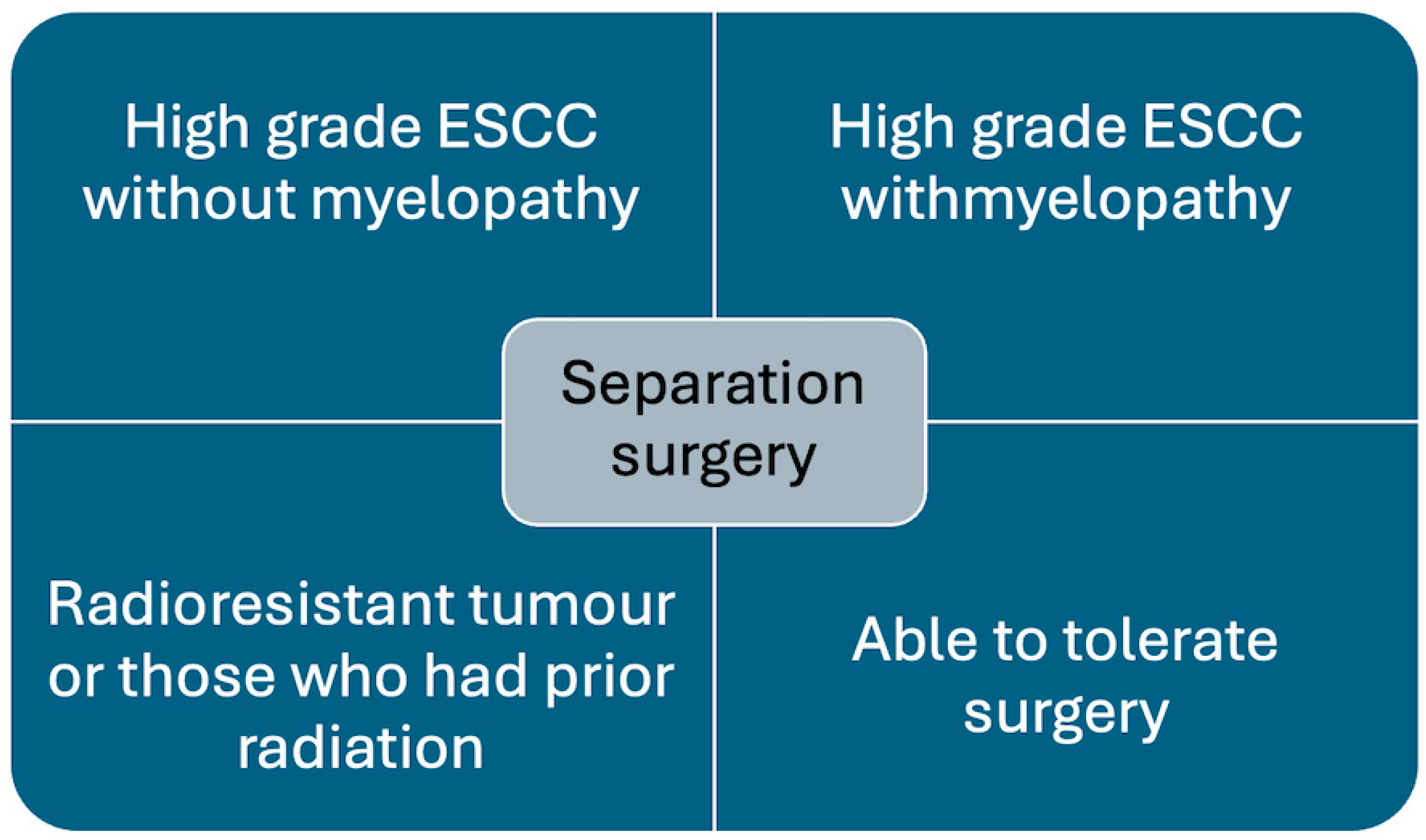
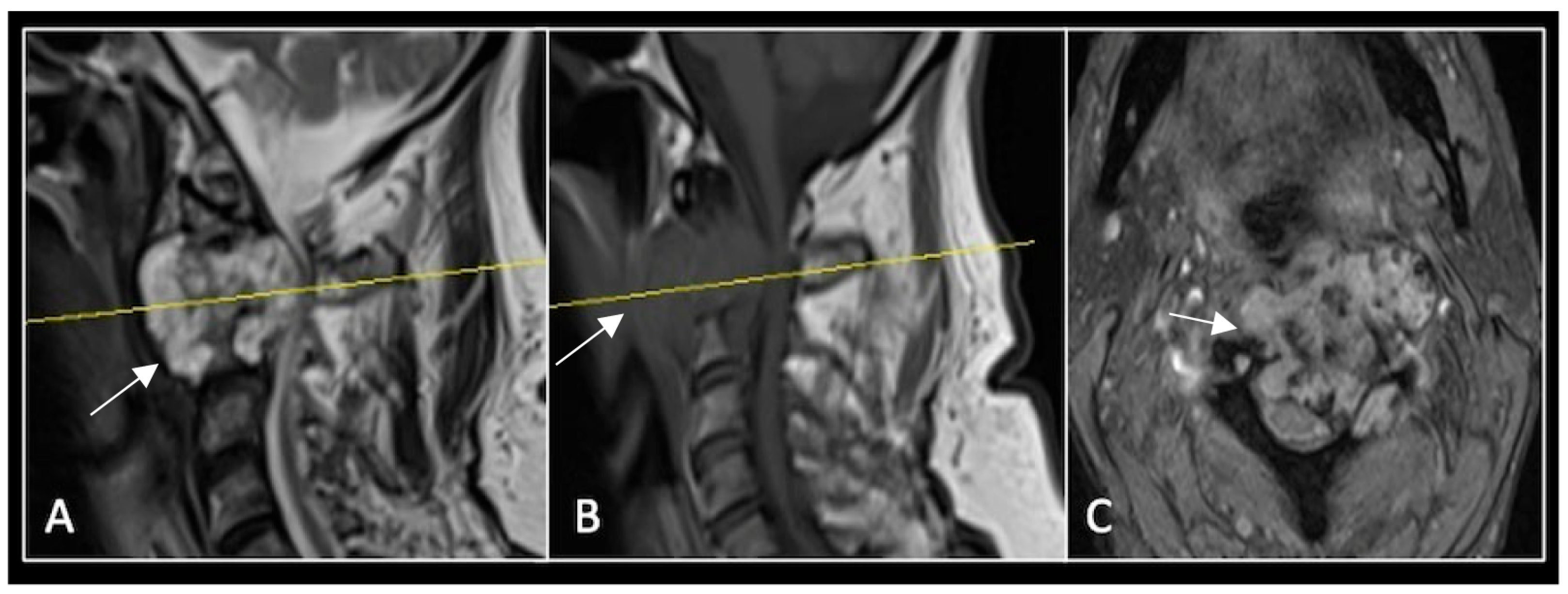

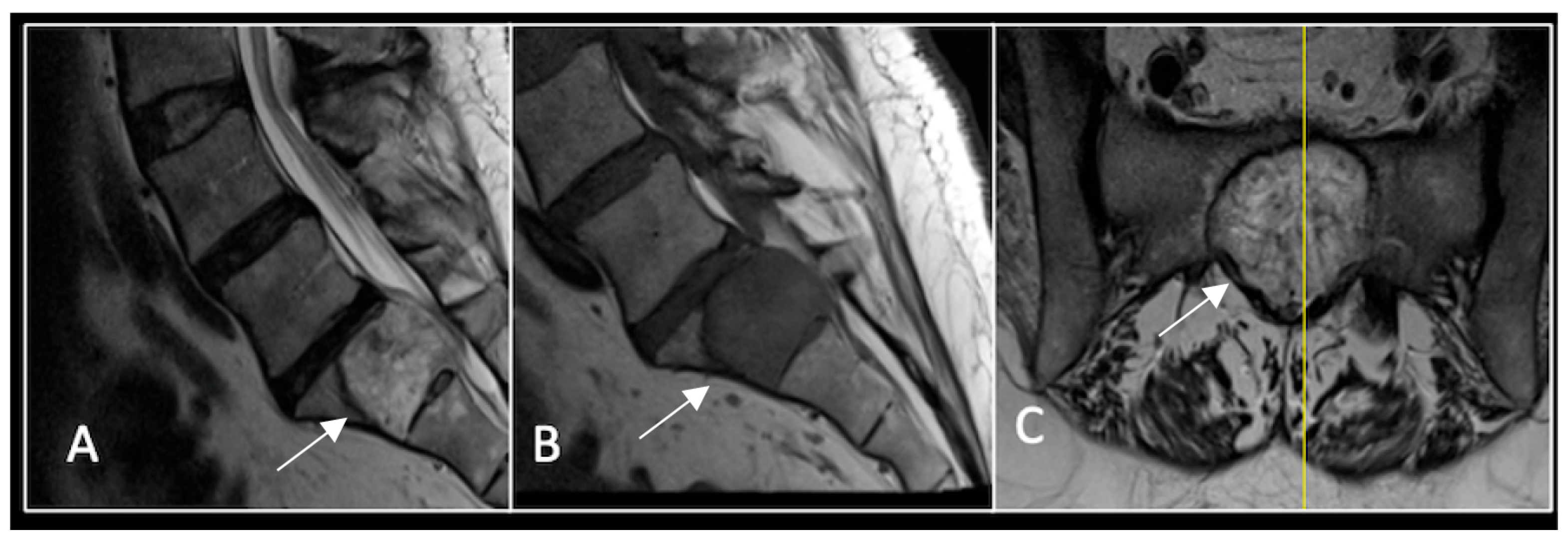


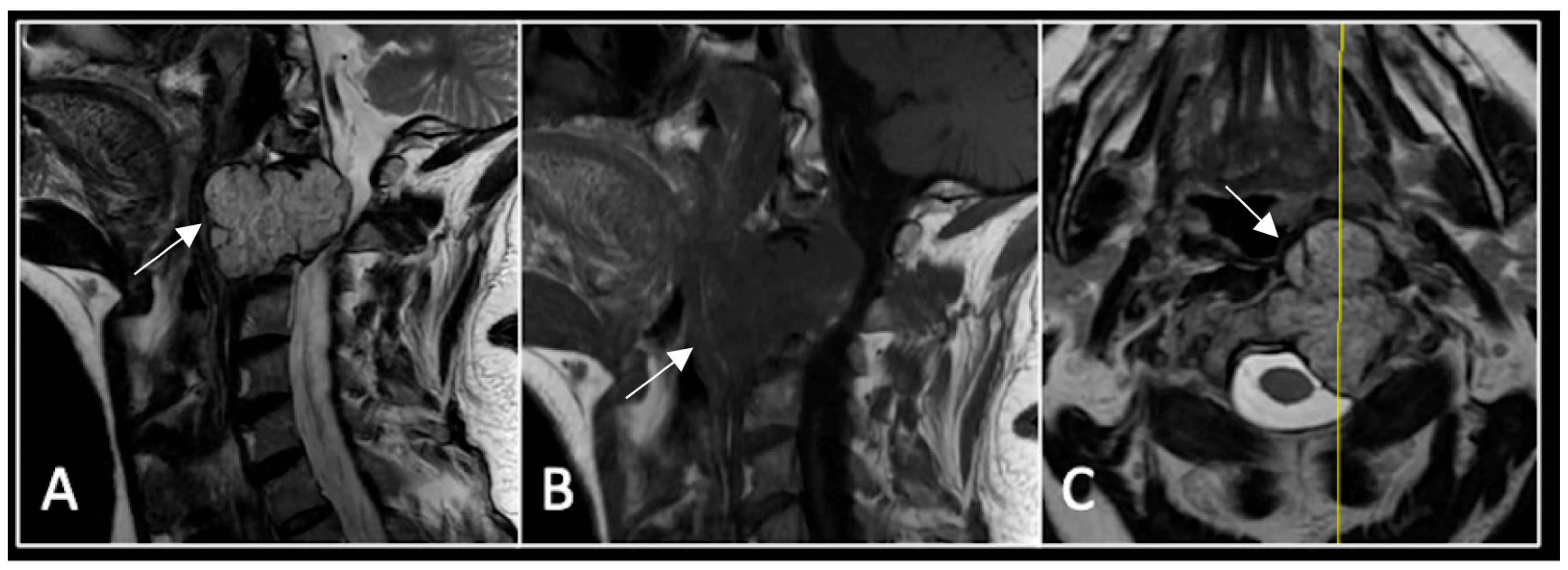
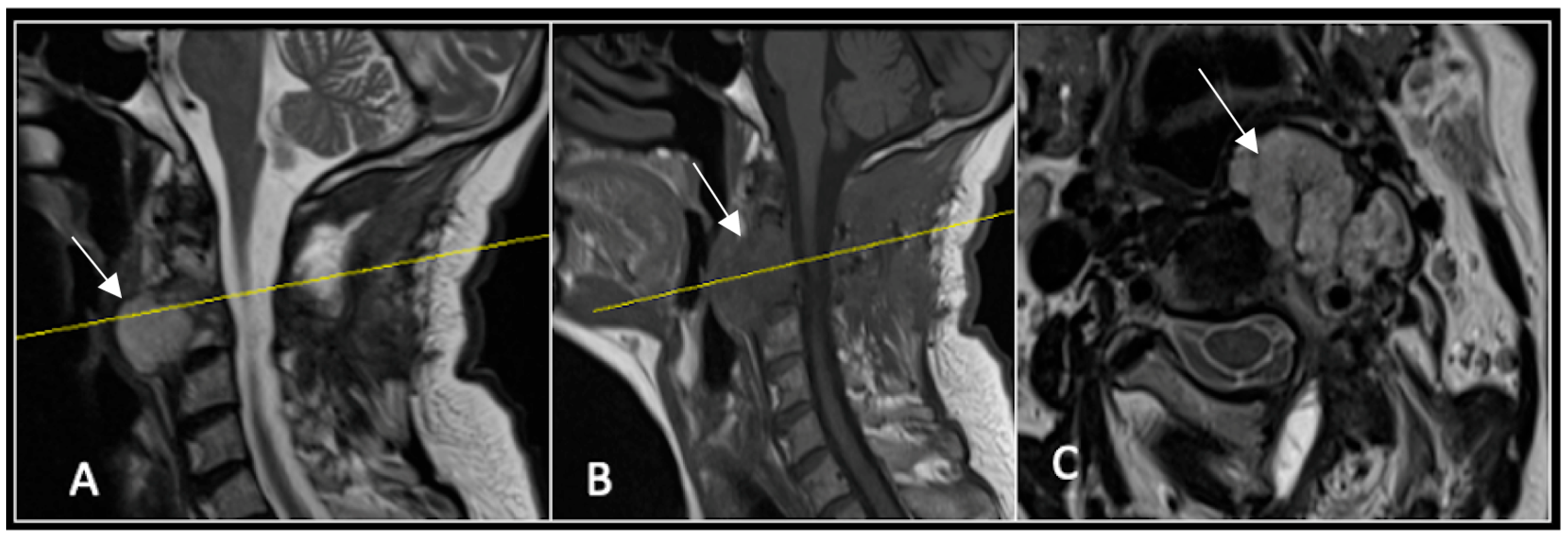
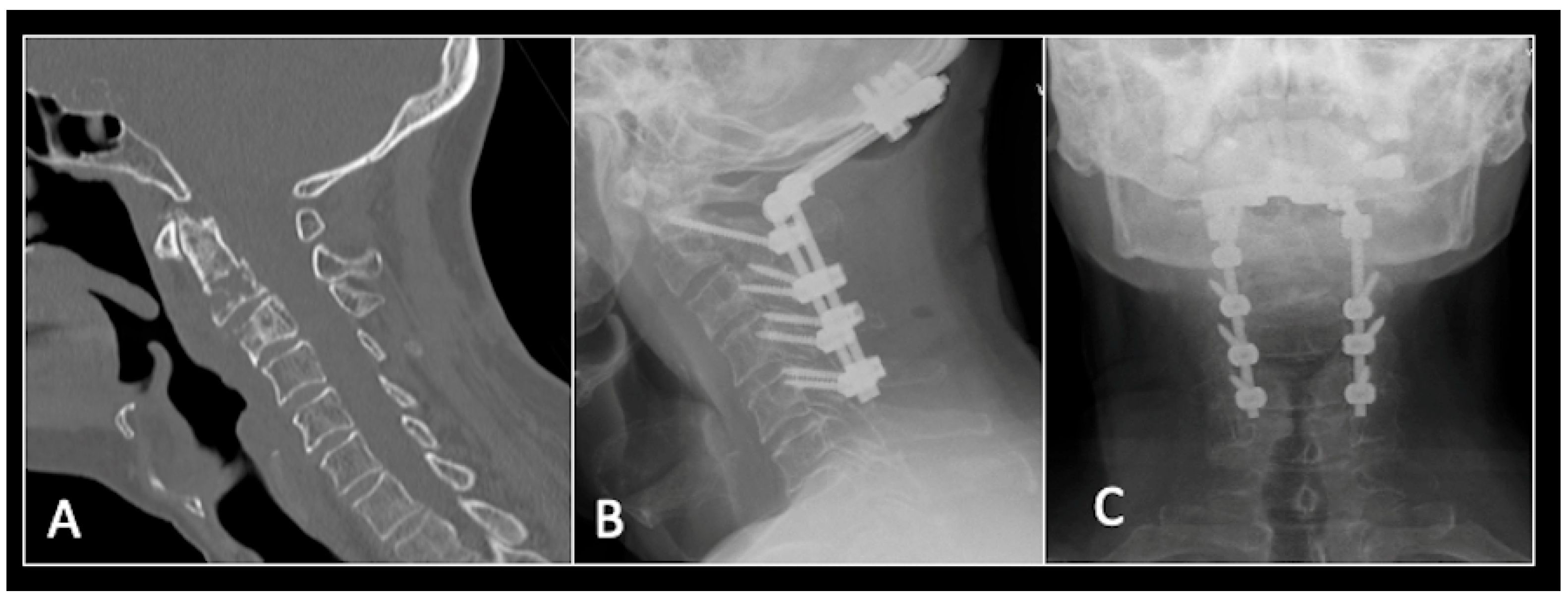
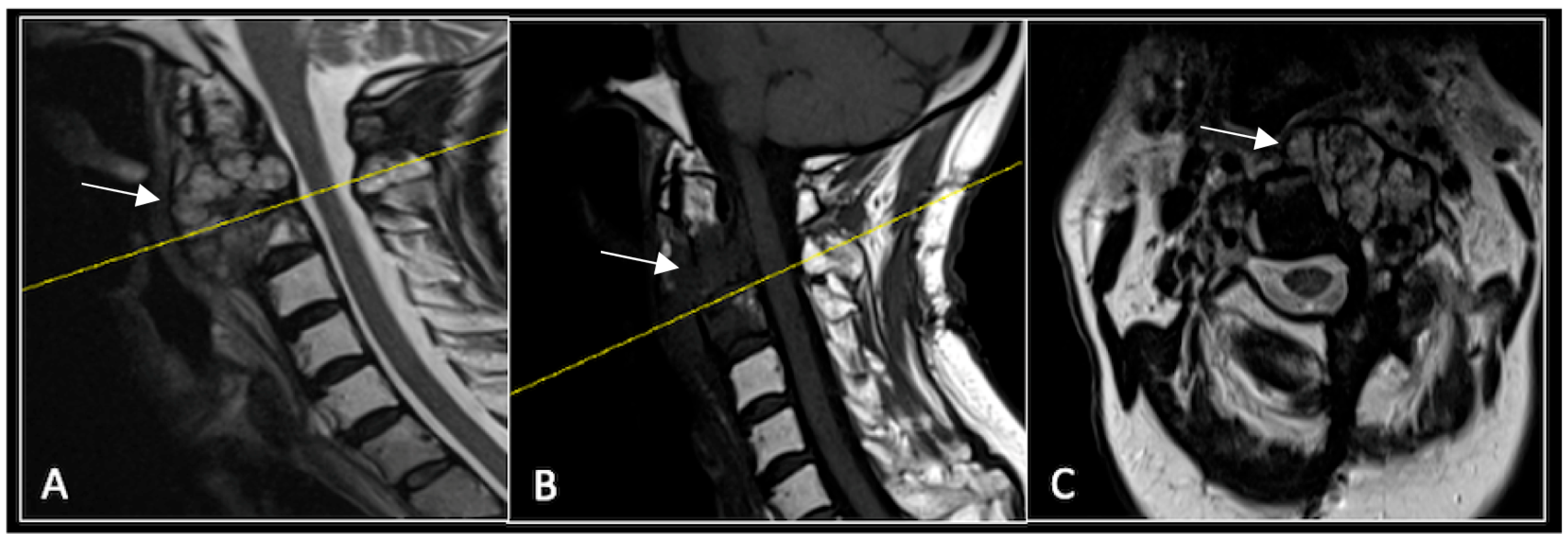
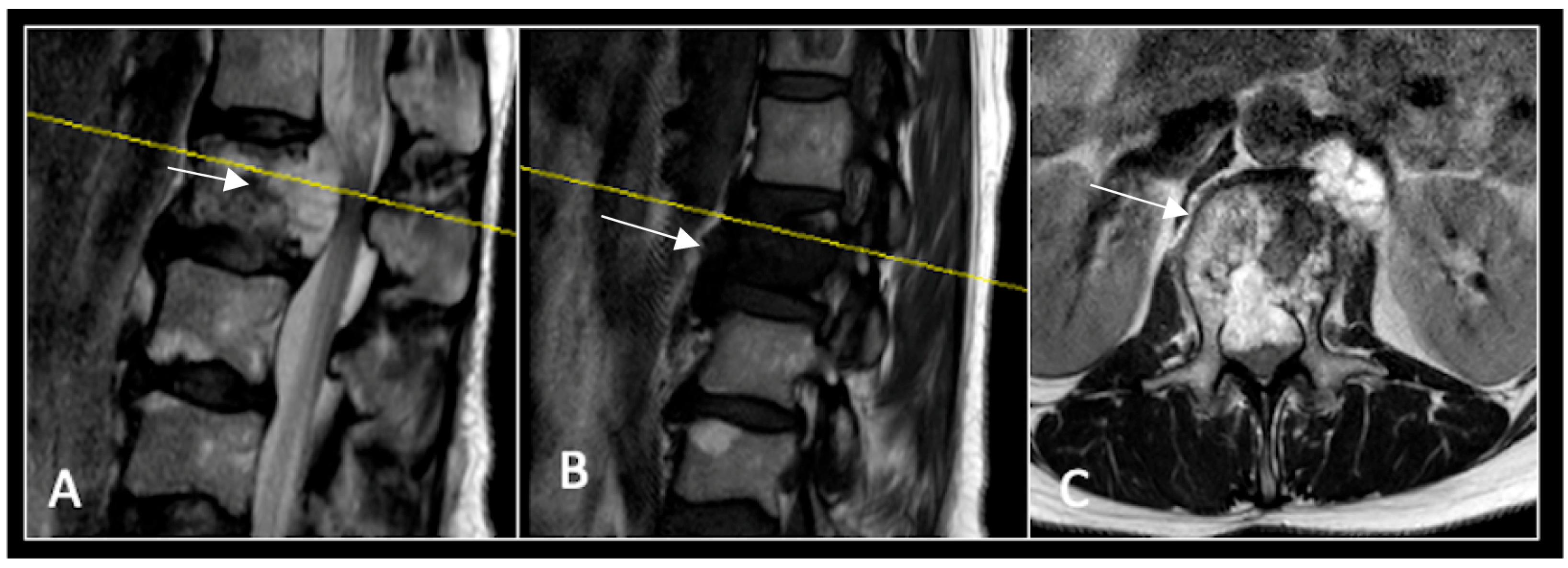
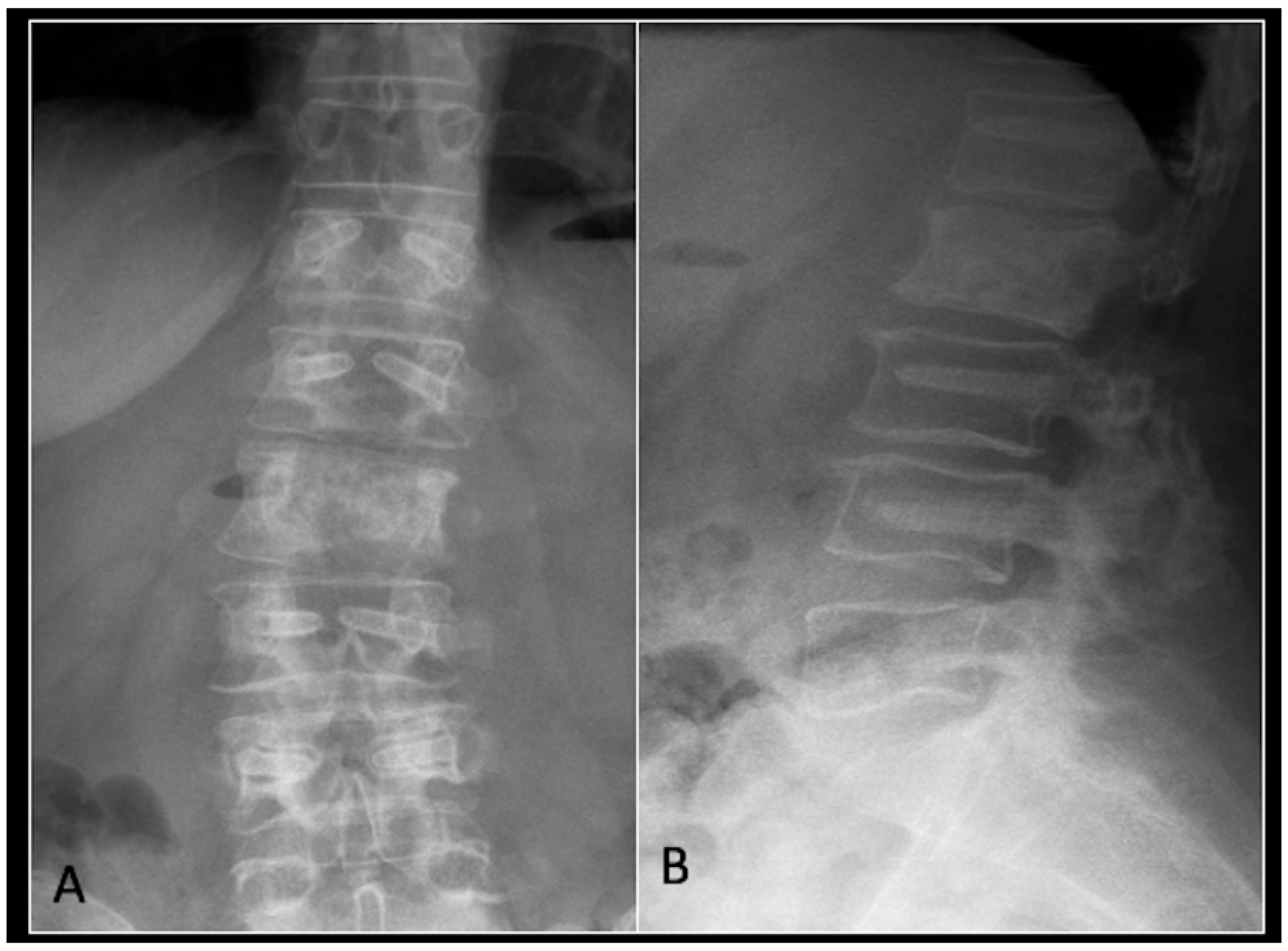
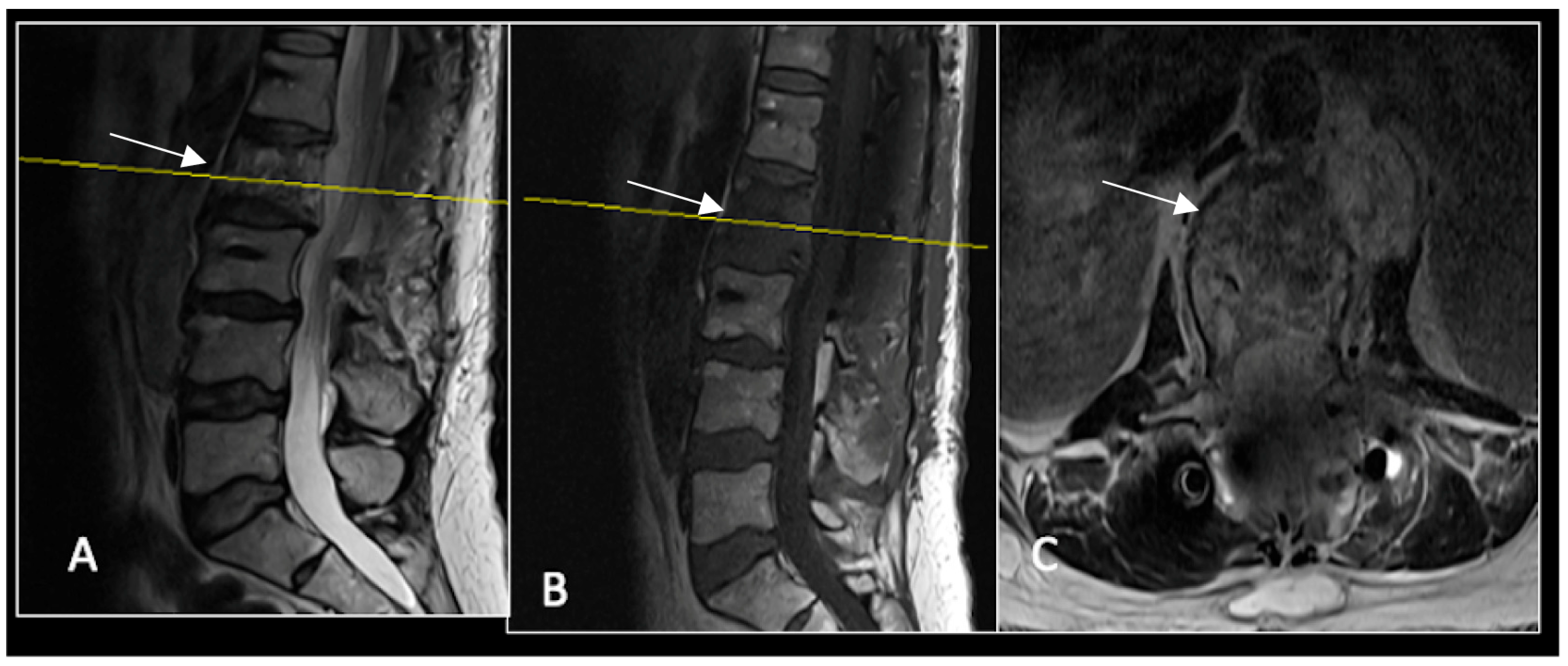
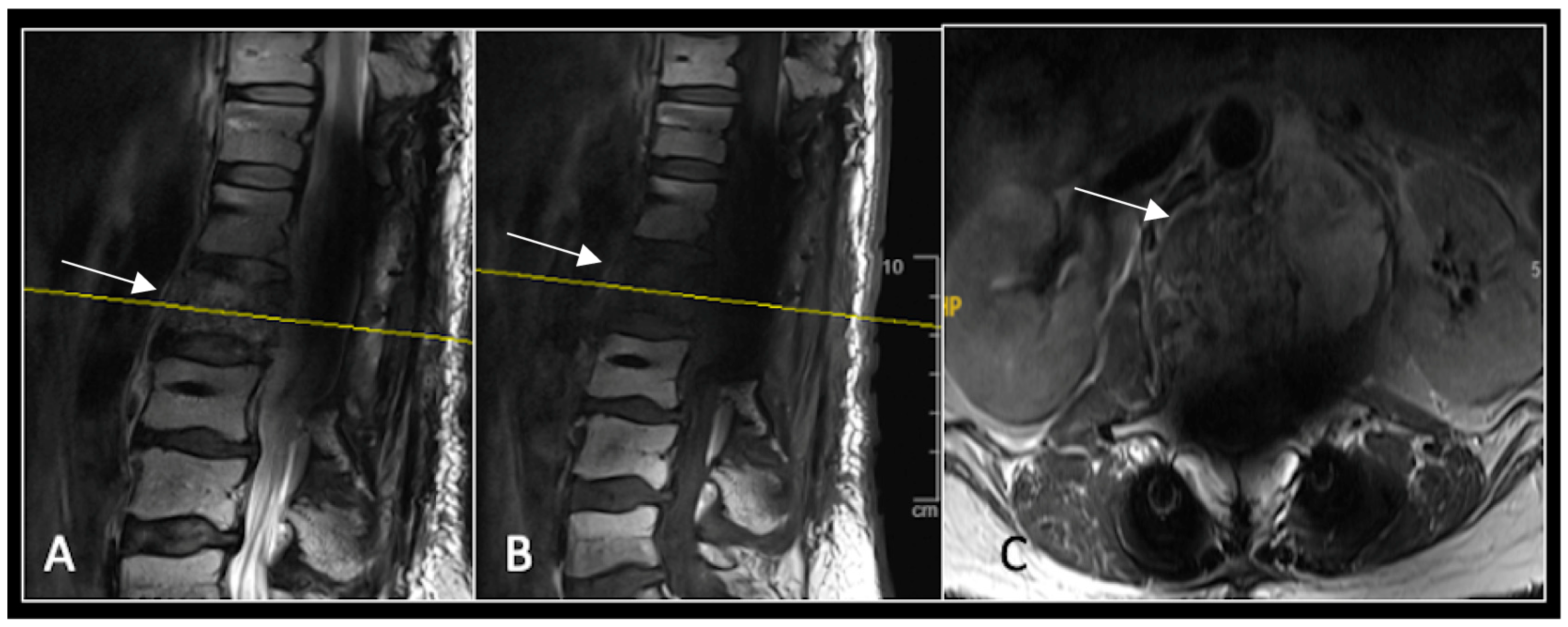
| Template |
|---|
|
|
|
|
|
Disclaimer/Publisher’s Note: The statements, opinions and data contained in all publications are solely those of the individual author(s) and contributor(s) and not of MDPI and/or the editor(s). MDPI and/or the editor(s) disclaim responsibility for any injury to people or property resulting from any ideas, methods, instructions or products referred to in the content. |
© 2025 by the authors. Licensee MDPI, Basel, Switzerland. This article is an open access article distributed under the terms and conditions of the Creative Commons Attribution (CC BY) license (https://creativecommons.org/licenses/by/4.0/).
Share and Cite
Khan, M.; Haq, L.; Gavvala, S.N.; Rehousek, P.; Hughes, S.; Botchu, R. The Radiologists’ Guide to Spinal Separation Surgery: What Does the Surgeon Want to Know? Diseases 2025, 13, 348. https://doi.org/10.3390/diseases13100348
Khan M, Haq L, Gavvala SN, Rehousek P, Hughes S, Botchu R. The Radiologists’ Guide to Spinal Separation Surgery: What Does the Surgeon Want to Know? Diseases. 2025; 13(10):348. https://doi.org/10.3390/diseases13100348
Chicago/Turabian StyleKhan, Mohsin, Labeeba Haq, Sai Niharika Gavvala, Petr Rehousek, Simon Hughes, and Rajesh Botchu. 2025. "The Radiologists’ Guide to Spinal Separation Surgery: What Does the Surgeon Want to Know?" Diseases 13, no. 10: 348. https://doi.org/10.3390/diseases13100348
APA StyleKhan, M., Haq, L., Gavvala, S. N., Rehousek, P., Hughes, S., & Botchu, R. (2025). The Radiologists’ Guide to Spinal Separation Surgery: What Does the Surgeon Want to Know? Diseases, 13(10), 348. https://doi.org/10.3390/diseases13100348






